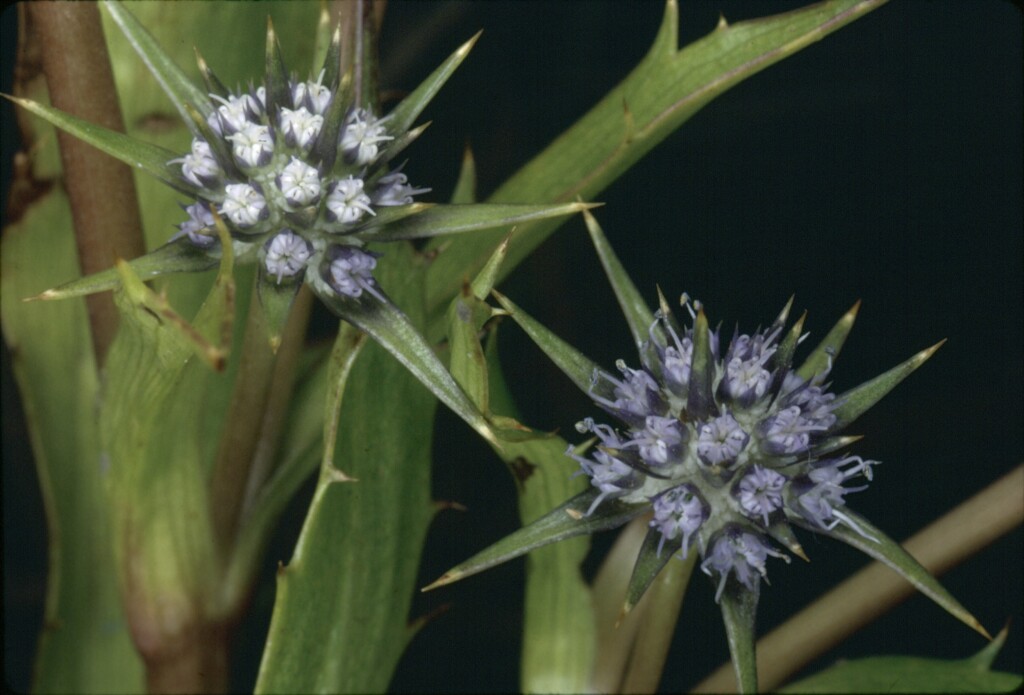Eryngium vesiculosum
Labill. PrickfootProstrate perennial (sometimes annual or biennial) herb, with short rootstock and clusters of blackish tubers. Basal leaves somewhat rigid, lanceolate, blades 2–15 cm long with long spinous teeth, petiole c. equal to blade. Flowering heads ovoid or hemispheric, 5–7 mm long, 6–8 mm wide on peduncles 1–3 cm long, arising directly from rosette and from one axil of successive pairs of opposite spiny bracts on trailing branches to 30 cm long; bracteoles of involucre 12–13 mm long, longer in primary heads; petals at first white, becoming bluish, apically bifid or sometimes appearing laciniate. Fruit (including persistent calyx segments) 3–4 mm long, covered with shortly acuminate vesicular scales Flowers Dec.–Feb.
LoM, MuM, Wim, GleP, VVP, VRiv, MuF, GipP, OtP, WaP, CVU, GGr, DunT, HSF, HNF. Also SA, ?NSW, Tas. Widespread and locally common in seasonally wet grassland, sedgeland or grassy woodland, mainly in south-central and south-western districts.
Eryngium vesiculosum is quite variable in size, but does not include plants so-called from New Zealand, New South Wales (with perhaps one or two exceptions), Queensland and Western Australia, which belong to other species as yet undescribed.
Michael, P.W. (1999). Eryngium. In: Walsh, N.G.; Entwisle, T.J., Flora of Victoria Vol. 4, Cornaceae to Asteraceae, pp. 260–263. Inkata Press, Melbourne.
 Spinning
Spinning


